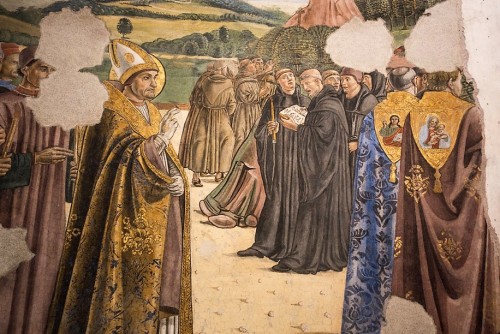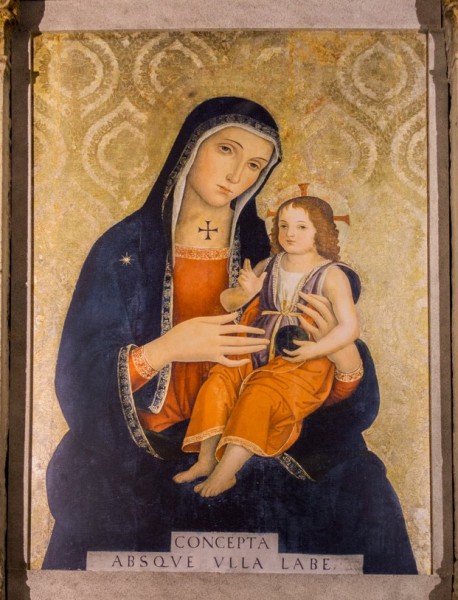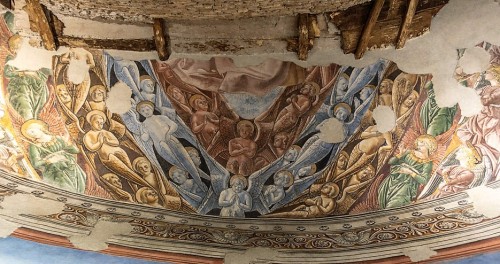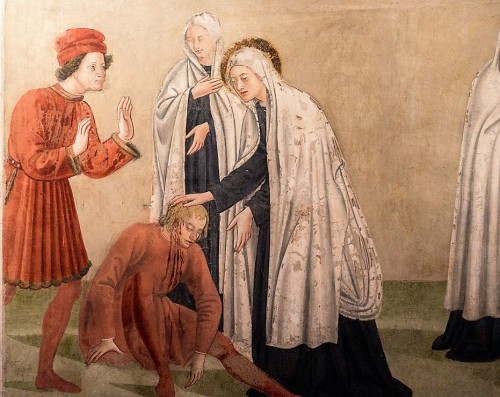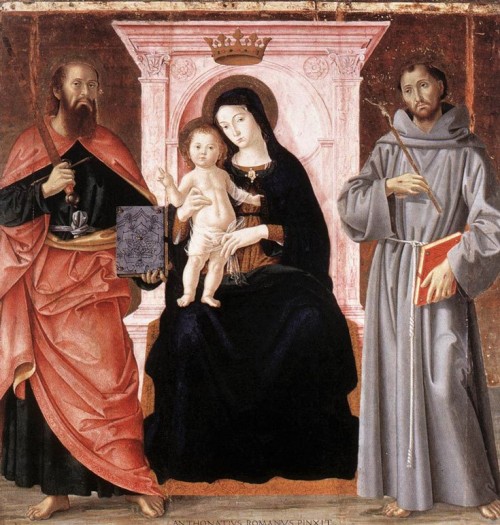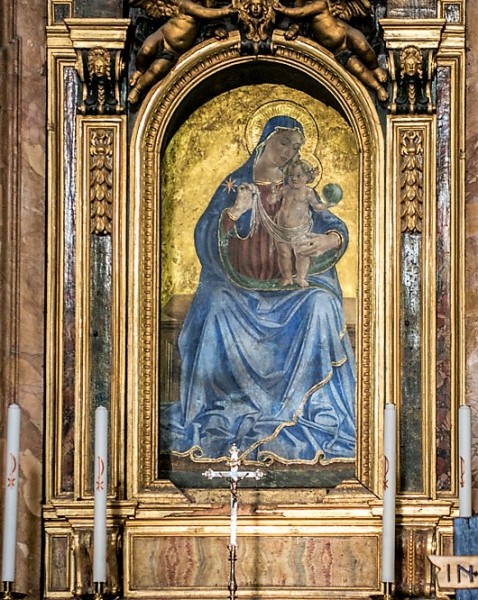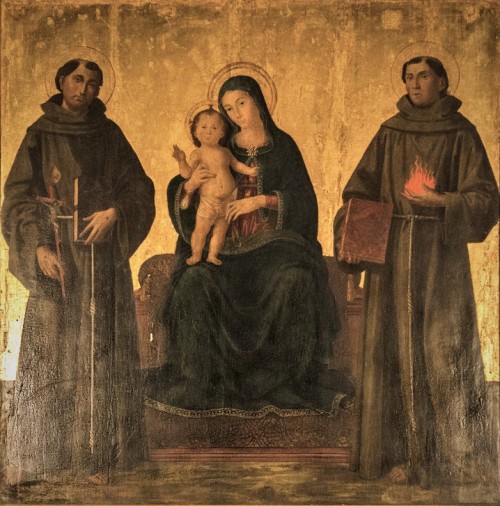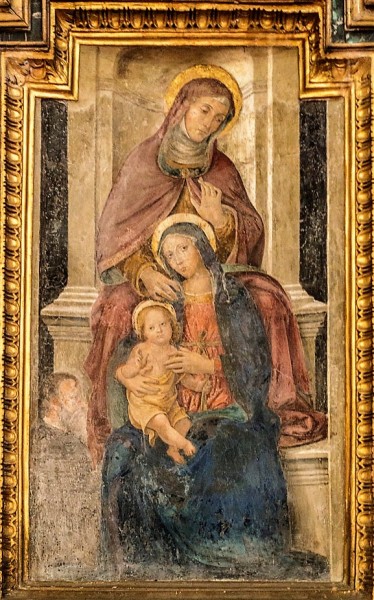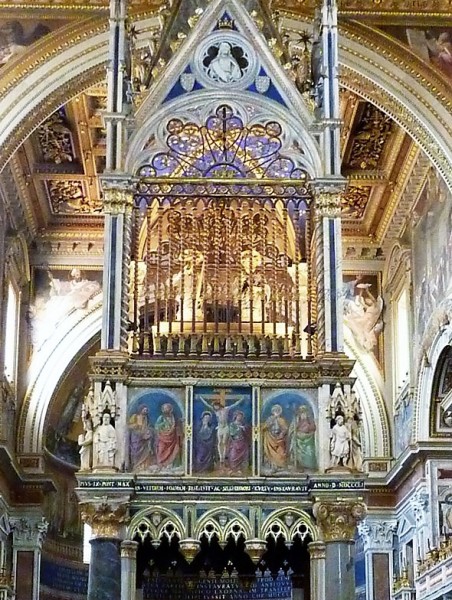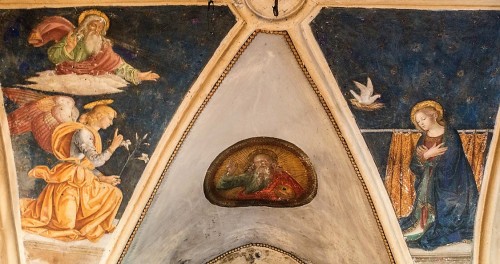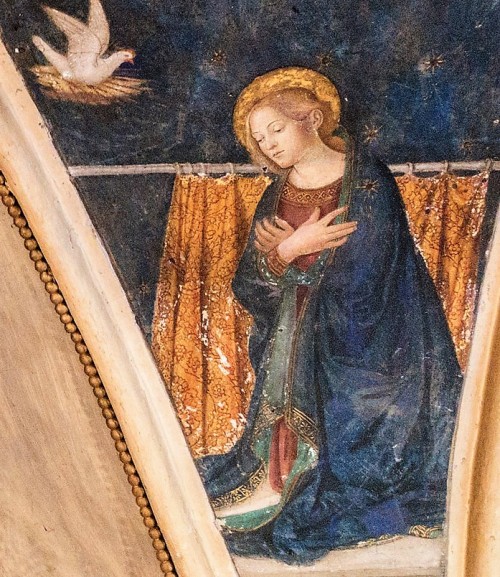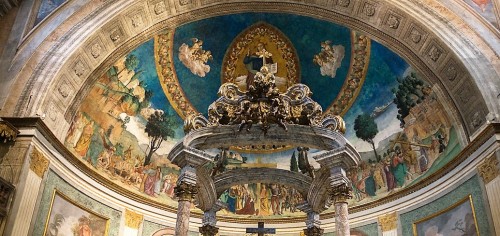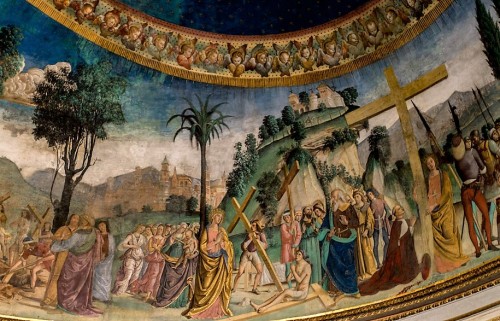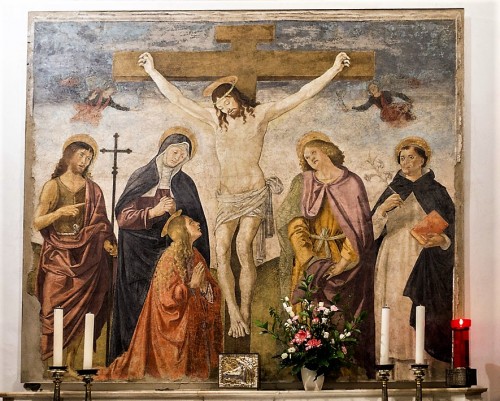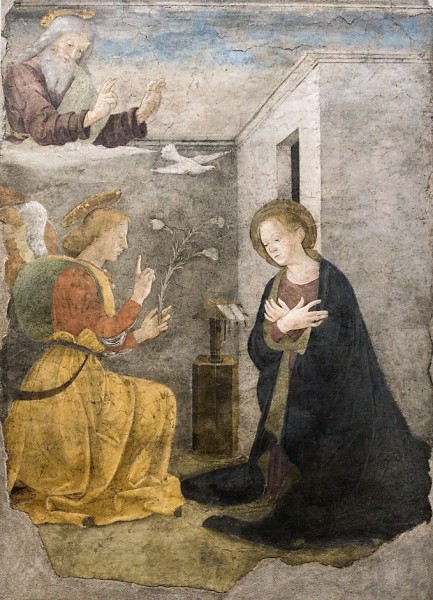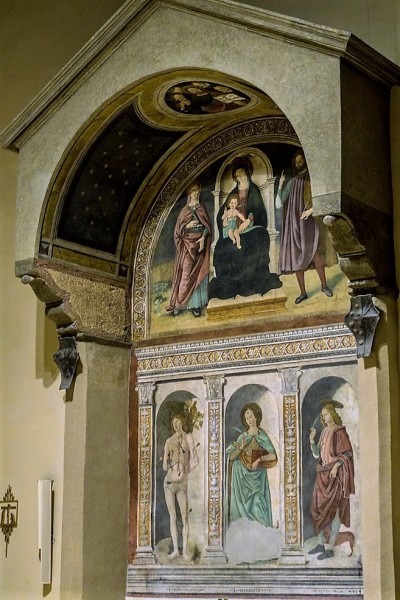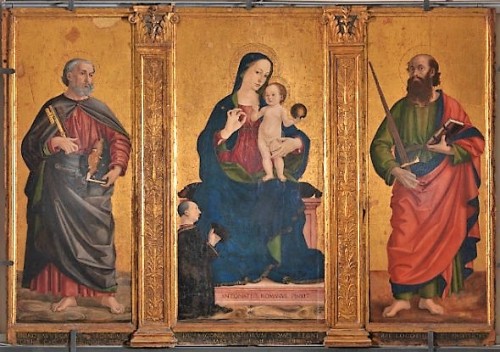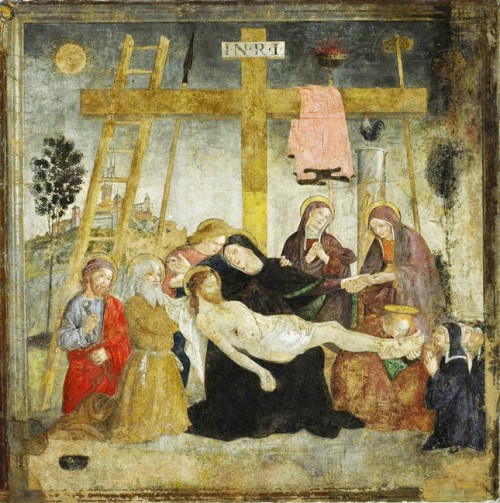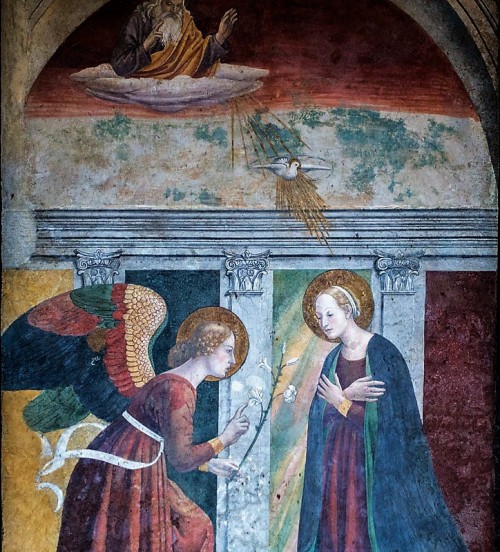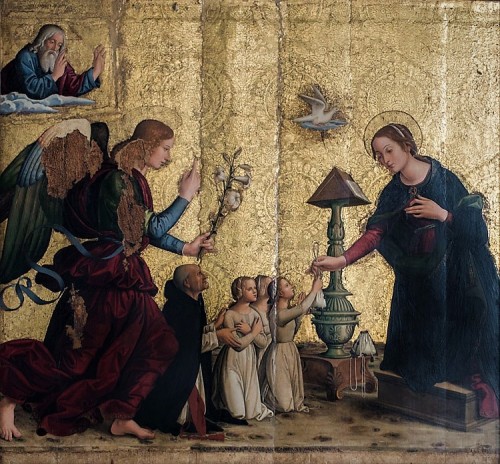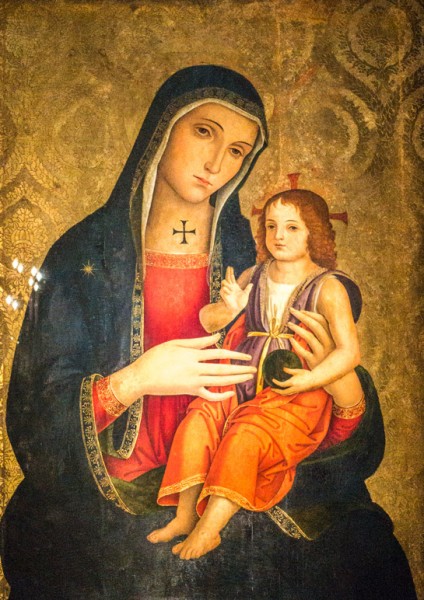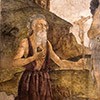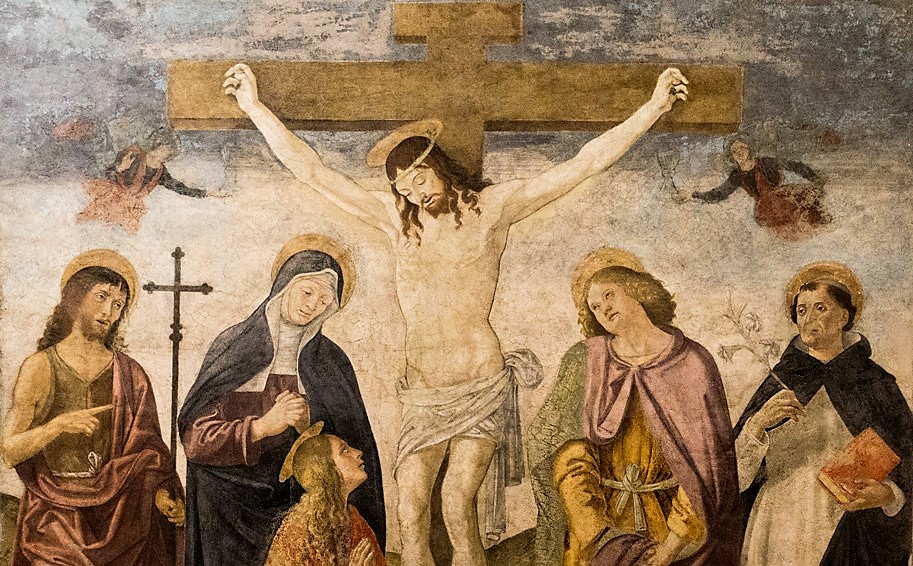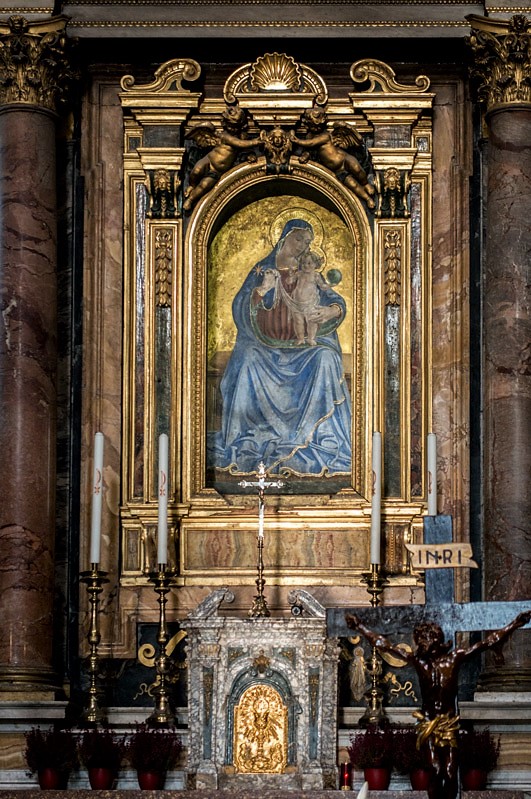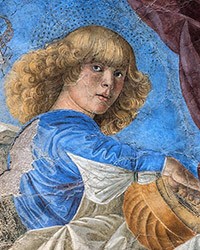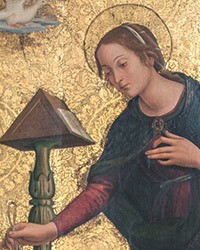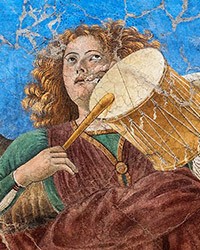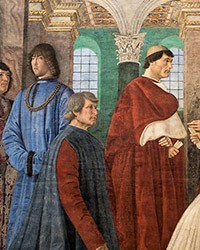His Madonnas with delicate facial features and restrained expression still today move with their beauty. And although we do not know much about him, we can unequivocally state that he was one of the most important Roman painters of the early Renaissance. Thanks to his talent and the ability to adapt to artistic novelties, which he copied from the outstanding artists of that time, he elevated Roman art to new levels. The works of Antoniazzo can be admired in museums all over the world, but in the Eternal City itself he also left behind several exceptional works. They were discovered anew and fully appreciated during a Roman exhibition in 2013 which was devoted to the artist.
His Madonnas with delicate facial features and restrained expression still today move with their beauty. And although we do not know much about him, we can unequivocally state that he was one of the most important Roman painters of the early Renaissance. Thanks to his talent and the ability to adapt to artistic novelties, which he copied from the outstanding artists of that time, he elevated Roman art to new levels. The works of Antoniazzo can be admired in museums all over the world, but in the Eternal City itself he also left behind several exceptional works. They were discovered anew and fully appreciated during a Roman exhibition in 2013 which was devoted to the artist.

